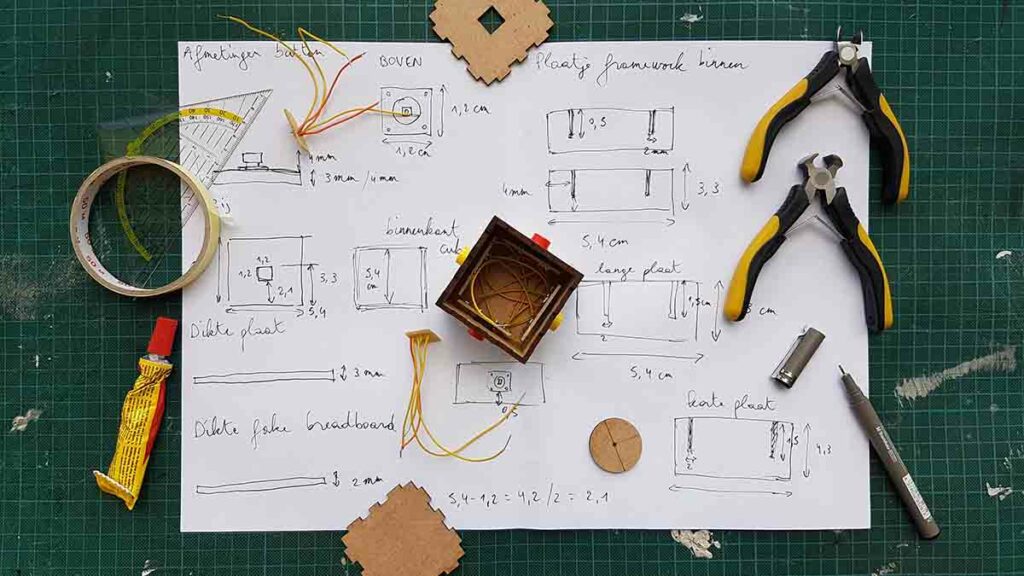Today we talk about a concept related to the process of creativity and innovation: prototyping. A prototype is an initial version of a product or service that is used to test the feasibility of an idea or concept. Prototypes can be physical or digital, and can range in complexity from simple sketches to working models. In other words, a way for ideas to come to life.
Prototypes are important in the creative process for different reasons:
- Concept validation: They allow designers and creators to verify the viability of a concept and its technical feasibility before investing significant resources in its development.
- User feedback: They can be used to obtain feedback from users on the usability, design and functionality of a product or service. This can help to improve the product or service before its final launch.
- Iteration: In addition, they can be used to iterate and improve a product or service. This can help designers and creators find the best solution to a given problem.
Prototypes are an essential tool for any creative process. They can help designers and creators develop better products and services by allowing them to test their ideas and get feedback from users.

Specific examples of prototyping in the creative process
Products: Used to test the functionality, design and ergonomics of a product. For example, a car designer may prototype a new car to test its handling and safety.
Services: Used to test the usability, workflow and customer satisfaction of a service. For example, a website designer may prototype a new website to test its usability and navigability.
Innovation: Used to test the feasibility of new ideas or concepts. For example, an inventor may prototype a new device to test its functionality.
Importance of mastering the prototyping process
Below, we’ll highlight some of the whys and wherefores:
- Clearer visualisation: creating a visual representation of an idea is one of the best ways to make it more tangible, communicate the vision to others and find alignment.
- Faster iterative refinement and concept validation: By creating a basic version of the product, we can test the fundamental desirability, quickly assess whether it has potential and determine whether it does the job it was intended to do. As we receive feedback and discover ideas during the testing phase, we can make the necessary adjustments and improvements to create a better final product.
- Deeper user feedback: Early prototypes can be shared with potential users or stakeholders to gather valuable feedback. This information can help identify bugs, improve usability and refine features before moving on to more advanced stages of development. Addressing these issues early on can save time, effort and resources in the long run.
- Reduced risk and improved efficiency: Addressing problems in the early stages of development can avoid costly and time-consuming solutions in the future. Prototyping can help you identify and rectify potential problems while remaining relatively easy and inexpensive to fix. This process certainly helps mitigate the risks associated with investing significant resources in a concept that may not work as expected.
Photo credit: SH